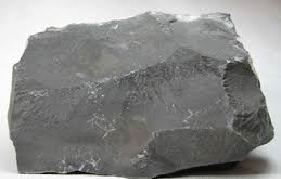On this topic, we have to know about geomorphology and its related questions-

GEOMORPHOLOGY

What is geomorphology?
What is geomorphology in geography?
'What is geomorphology process?Why is geomorphology important?
What is the nature of geomorphology?
What is the difference between geology and geomorphology?
What is applied geomorphology?
Who is the father of geomorphology?
What do Geomorphologists do?
How much does a geomorphologist make?
What is a geomorphological hazard?
What is a geomorphic disaster?
What is geomorphology?
Geomorphology, in its most fundamental definition, is the investigation of the world's physical highlights and the procedures in which those highlights are shaped. Geomorphology originates from the Ancient Greek words "Ge", "morphe", and "logos" which signify "Earth", "change", and "study" separately.
What is geomorphology in geography?
Geomorphology is characterized as the study of landforms with an accentuation on their birthplace, development, sha
pe, and dissemination over the physical scene. A comprehension of geomorphology and its procedures is hence basic to the comprehension of physical geology
'What is geomorphology process?
Geomorphology is the investigation of the nature and birthplace of landforms, especially of the developmental procedures of enduring and disintegration that happen in the air and hydrosphere. These procedures persistently shape the Earth's surface and create the silt that course in the Rock Cycle
Why is geomorphology important?

MORPHOLOGY

The significance of geomorphology for physical geographers isn't just vital in understanding Earth's physical changes yet additionally in planning for hazards.[2] For example, understanding issues of deforestation, soil properties, and regular precipitation can more readily evaluate frequencies of flooding occasions and their potential threat.
Land use changes, for example, asphalt that keeps the ingestion of water, has hurried physical changes in spots where overflow has expanded in spots because of an absence of open ground and vegetation that retains water. Urban conditions are frequently especially helpless against catastrophic events as they quickly change a scene through evacuation of local vegetation and development that clears over land. Urban arranging needs to represent normal geomorphic occasions so that as new urban regions are produced geomorphic factors that would influence urban spots could be duplicated through legitimate seepage or utilization of developing materials that are best adjusted to the nearby condition, including components, for example, stickiness, precipitation, and temperature.[3]
Casual settlements, or ghettos, and recognizing land use change utilizing geomorphological principals isn't just vital in distinguishing perils, or zones, where landscape may be flimsy and helpless to fiascos, however as populace weights in a few nations, have expanded greater settlement is happening in minimal lands.[4] A substantial level of individuals, assessed as possibly as high as 33% of the worldwide populace, presently live in ghettos, many possessing territories that are defenseless against flooding, seismic tremors, or poor waste that can make polluted water supplies. Geomorphology, as a basic segment of physical geology, is expected to comprehend characteristic landform changes and potential perils for populaces.
What is the nature of geomorphology?
Geomorphology is the investigation of landforms and scenes on Earth and different planets, and the procedures that shape them. This control is fundamentally worried about the disintegration and testimony of shake and residue by wind and water, yet in addition incorporates the formation of geology through tectonics.
What is the difference between geology and geomorphology?
It bargains just with the investigation of the world's external surface or the covering. Then again, topography is a part of science that bargains with all the physical highlights of earth including the minerals that are found in the earth and their attributes. This is the primary contrast among geomorphology and topography.
What is applied geomorphology?

APPLIED GEOMORPHOLOGY

Connected geomorphology is a field of science where the exploration results give data geomorphic landforms or forms that might be of worry to society, and, where applicable, gives answers for issues of geomorphic setting
Who is the father of geomorphology?
William Morris Davis (February 12, 1850 – February 5, 1934) was an American geographer, geologist, geomorphologist, and meteorologist, regularly called the "father of American geology".
What do Geomorphologists do?
Geomorphology is the investigation of individual highlights and the procedures that make them. These can be physical, (for example, climate), ecological (icy masses), synthetic (shake disintegration because of sharpness) or natural (the organic proof left by specific plants, trees or creatures that shape the ground).
How much does a geomorphologist make?
As at 2015, the middle pay for geoscientists Sarkari Naukri blog, by and large, was $89,700 as indicated by BLS. There are a few insights to propose that geomorphologists gain, all things considered, around $20,000 every year higher than this.
What is a geomorphological hazard?
geomorphic peril. Geomorphic dangers are those beginning from the lithosphere, including volcanic ejections, seismic tremors, tidal waves and mass development (avalanches or torrential slides).
What is a geomorphic disaster?
At the point when these results majorly affect society and additionally foundation, they wind up cataclysmic events. The term peril is regularly connected with various specialists or procedures. ... Size and recurrence, and also transient and spatial scale, are key geomorphic ideas unequivocally corresponded to regular perils.



1 Comments
Read This Article In Hindi So Please Click On This Link What-is-geomorphology-and-its-process,-importance-and-disasters(In Hindi)
ReplyDelete